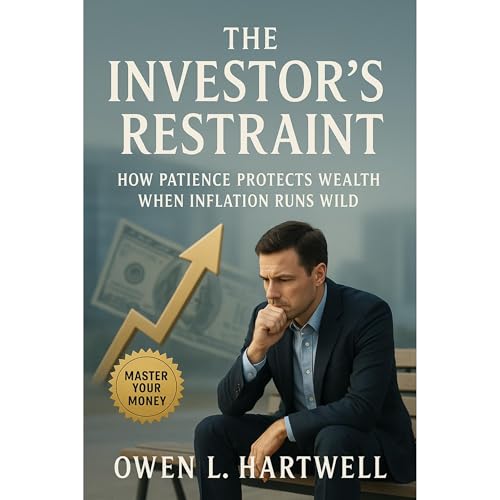
The Investor’s Restraint
How Patience Protects Wealth When Inflation Runs Wild
No se pudo agregar al carrito
Add to Cart failed.
Error al Agregar a Lista de Deseos.
Error al eliminar de la lista de deseos.
Error al añadir a tu biblioteca
Error al seguir el podcast
Error al dejar de seguir el podcast
$0.00 por los primeros 30 días
Compra ahora por $6.99
-
Narrado por:
-
Virtual Voice
-
De:
-
Owen L. Hartwell

Este título utiliza narración de voz virtual
Inflation is the investor’s oldest adversary, yet the true destroyer of wealth is not rising prices but the human impulse to react hastily to them. The Investor’s Restraint reveals why patience—not speed, not clever prediction, not fashionable hedges—remains the only shield capable of preserving and compounding capital across decades of turbulence.
Written in a voice that is both erudite and darkly ironic, this book dissects the behavioral traps that inflation sets: panic selling, hype chasing, overtrading, herd-following, and the endless search for “safe havens” that collapse when most needed. Each chapter draws on historical episodes—from the oil shocks of the 1970s to the meme stock mania of 2021—to show how investors amplify inflation’s damage through impatience. At the same time, it demonstrates how discipline, restraint, and long horizons convert volatility into compounding opportunities.
Readers will learn how to distinguish signal from noise by focusing on fundamentals like cash flow, debt, pricing power, and durable demand. They will see why compounding requires uninterrupted time, why quality businesses thrive under inflation while fragile ones implode, and why the temptation to trade frequently or chase fads almost always ends in regret. The narrative frames inflationary cycles as stress tests, exposing which investors have true discipline and which collapse under pressure.
Drawing on behavioral finance research published in The Journal of Finance, Management Science, Financial Analysts Journal, and beyond, the book grounds its arguments in evidence rather than platitudes. It examines how families preserve discipline across generations, how institutions enforce patience through structure, and how individual investors can adopt the same frameworks through checklists, long horizons, and emotional self-regulation.
Far from a handbook of quick fixes, The Investor’s Restraint articulates a patient investor’s code: restraint, clarity, conviction, humility, and continuity. These principles, once internalized, act as the ultimate hedge—protecting not just portfolios but temperament itself from inflation’s corrosive effects.
For seasoned investors, finance professionals, or thoughtful readers seeking to understand why restraint matters more than brilliance, this book offers a rigorous yet wry exploration of the one trait markets reward most consistently: patience.


